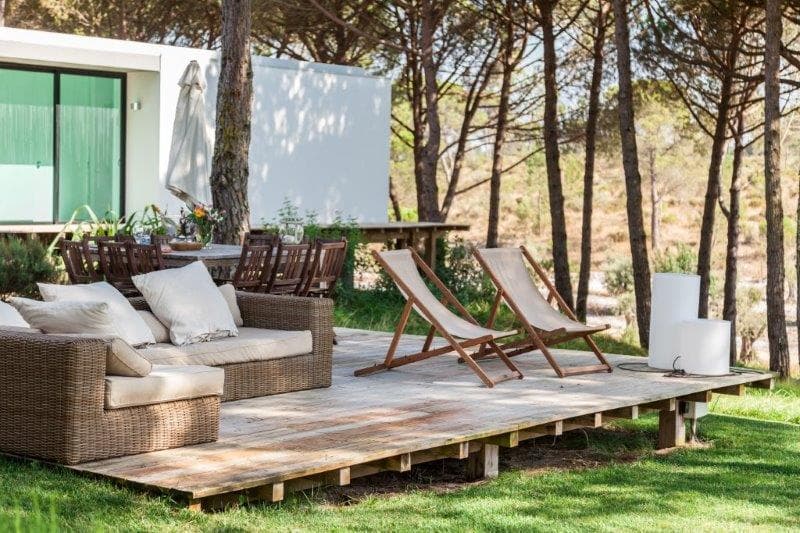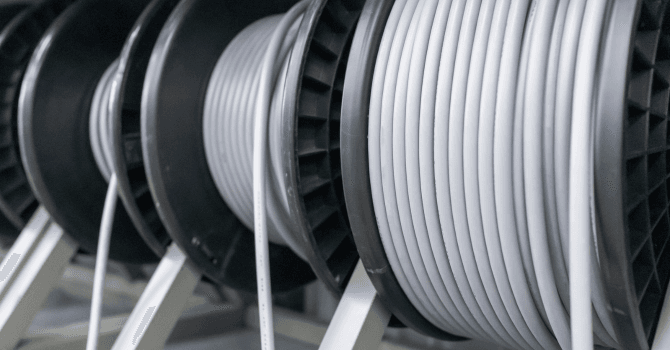
Even though we may spend a lot of time indoors, we’re all looking for that connection to the exterior. Building a wood patio is an excellent way to spend some time outside, whether that means entertaining or spend quality time with friends and family. Not only is a wood patio a beautiful spot to enjoy the great outdoors, but it will increase the value of your home overall. If you’re looking to take on this project, you might be wondering what models are available on the market as well as how much this is going to cost.
Luckily, in this article, we’re going to cover some of the wood patio models as well as their prices. There are several factors that will affect the overall cost of your deck, so it’s important to consider all aspects accordingly including materials, potential labour costs, permits and so forth.
Everything you need to know about wood patios

Types of wood for your patio
First things first, we’re going to go over the types of wood that you may consider using for your patio. The wood you choose to work with will have an overall impact on the price you end up with at the end of this project. Some woods are more durable than others, so keep reading if you’re having trouble making a decision.
Pressure-treated wood
Average cost: $3-9 per square foot
Pressure-treated wood is one of the most popular materials on the market when it comes to outdoor construction projects. This is due to many factors, including but not limited to its price point, its resistance to rotting and its durability. Pressure-treated wood is resistant to insects, as it has been chemically treated. Therefore, if you live in a humid climate with surrounding wildlife, this may be the option for you!
We should mention that even though this material stands up in very damp locations, it will need to be re-sealed every other year. This type of maintenance, as well as the costs involved, are not always favoured by homeowners, so do bear them in mind.
Cedar
Average cost: $4,50-6 per square foot
Cedar is fairly common when it comes to wood patio construction. If you’re interested in building with wood due to its natural grain and beauty, then you may choose to work with cedar. Pressure-treated wood is treated and thus, does not possess the natural qualities and vibrant colours that cedar does.
Not only is cedar a stunning material, but it’s very easy to work with, cut and trim as well as being fairly light. Therefore, it’s great for those who are interested in low maintenance deck construction. Like pressure-treated wood, cedar is also rot-resistant so works well in damp conditions and will not warp due to weathering or ageing. This is a softwood, and therefore it may splinter easily. In some cases, you may have to treat it yourself. It’s important to look for a heartwood cedar, as this will last longer than one which is construction-grade.
Pine

Average cost: $6-8,50 per square foot
When pressure treated, pine is a great choice for your outdoor patio. This is due to the fact that it runs cheaper than many other kinds of wood while maintaining its natural appeal. Pine comes in different grades, but when it comes to needing something for outside, it's important you choose the top grade.
Now, pine is infused with chemicals and for this reason, it has a tendency to expand and contract. With this in mind, this decking material is not suited for humid or damp climates, as it’ll lead to wear and tear. However, for those living in a moderate or balanced climate, pine can last up to 15 years if treated properly. We should also mention that this material is considered environmentally-friendly and this aspect may be appealing to many homeowners.
Redwood
Average cost: $8,50-12 per square foot
If you hadn’t already taken stock, you may not realize that redwood is the most expensive of all the materials listed. This is due to many factors, including that it's extremely lightweight as well as the strongest of the materials. Not only this, but redwood has a gorgeous appearance that cannot be mimicked.
Like the other woods listed, it’s resistant to rotting and therefore, will not need to be treated any further. However, if you live in a sunny part of the country, redwood may need to be treated for UV protection, as this will help to keep the natural elements and appearance of the wood. If you live in a damp place, the wood may darken due to moisture. This can be remedied by simply washing it with a pressure washer. This wood is popular on the West Coast and is easily accessible.
It’s important to mention that in other parts of the country, you may have to pay extra for this wood to reach you and therefore, the price listed above could vary. This wood is also considered environmentally-friendly, and that aspect could be appealing.
Get 3 renovation quotes for your wood patio project
RenoQuotes.com can help you find a specialist for your outdoor patio project. If you submit your project to us, we’ll put you in contact with top-rated contractors. Fill in the form on the homepage (it only takes a few minutes), and you will get estimates from trusted professionals.
Dial 1-844 828-1588 to speak with one of our customer service representatives.
Looking for something else?
Related articles
The latest industry news, interviews, technologies, and resources.

Amanda Harvey
•07 Nov 2023
Home renovation projects require plenty of research, careful planning, and detailed steps. Applying for a building permit is just one of the required necessities. Building permits cannot be overlooked, and depending on where you’re living, the forms, fees and documentation needed will vary. We’re here to offer a way to help you navigate fees for building permits in the city of Toronto.

Cynthia Pigeon
•07 Nov 2023
To limit the creation of urban heat islands, white roofs have become increasingly popular and are the subject of much media attention. Praised by some and questioned by others, there is much debate about the real benefits of white roofs. Here is a summary of the information reported by the two main parties involved.

Editorial Team
•09 Oct 2024
Plastic is a hugely exploited building material since it’s durable, waterproof, supple, and lightweight. However, just like its many other daily uses, it definitely has a bad reputation. Subsequently, several companies are looking to take major steps to reduce its harmful effect on the environment.

Léa Plourde-Archer
•12 Jun 2025
When it comes to interior transformations and renovations, walls are one of the first elements that come to mind. They are often one of the least expensive renovations, and many people decide to complete the work themselves.

Editorial Team
•07 Nov 2023
Have you met an interior system contractor before? This is a profession where precision is essential to ensure quality finishes inside the home. The installation of the interior system consists of erecting walls, partitions, and suspended ceilings, but also aims at the work of insulation and soundproofing.